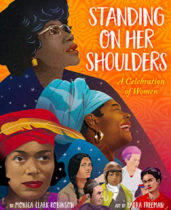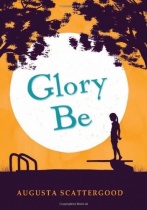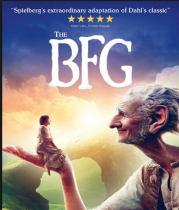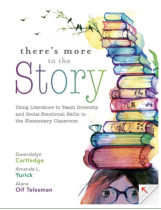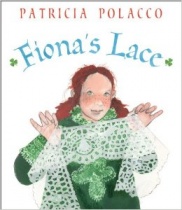As I stepped into the preschool room for the first time this semester, I was uncertain as to what challenges I would experience, activities I would facilitate or roles I would assume within the classroom. Initially it was difficult to adapt to the classroom environment and I pondered over ways in which I could expand my role. I did not know whether I should involve myself more during activity time, communicate more with the students or continue to distance myself. I searched for ways to open my heart and seek guidance and it was during this time that I remembered a quote I had found one day as a sixth grader. As I was standing in line with my mom at the post office, a young girl walked by wearing a shirt that read, “Childhood is a Journey not a Race.”
I realized that in order to develop a positive role in the classroom I could not simply rush through the class in hopes of achieving a good grade. This was about embarking on a journey and using my creativity and my talents to teach and learn from the students.
The following day in preschool, a student asked me to help him create a “fake police station.” Immediately, I found myself in the dramatic play area pretending to be a police woman with the students, fighting the crime of the world. The following weeks I was eager to talk to my students and ask them questions about their artistic creations or their plans for the weekend. As I opened up to the students, they began to willingly ask me to help them color or draw or read books during activity time; the more comfortable I was in my role as a teacher, the more comfortable they were in their role as a student.
In addition to strengthening communication skills and participating in the student activities, I also assumed a professional role; I practiced solving problems in difficult situations and acted as a mediator between frustrated students. During my first weeks in the classroom, one particular student was very obstinate when asked to clean up or sit on the stairs or put her things away. I became more assertive and learned to work with the personality of this student. Instead of letting her get away with ignoring me I took action and said, “You need to clean up like all the other students have a seat on the stairs.” I was no longer afraid to set down the rules and because of this role change I was treated as a respected adult.
Child development cognition and learning: It was through planning my Peanut Butter and Jelly lesson that explored techniques of teaching and ways in which students can cognitively process information. I included many hands-on activities so that the students would be able to cognitively and visually process the book I was reading and the activities that followed. I reinforced the sequencing of the story through hand motions where the students pretended to “stomp the grapes” and “roll the bread.” The students reacted well to the inflections in my voice, the cooperative activities and the reinforcing hand-motions; in other words, they responded well to a lesson including all senses.
Subject matter, content, pedagogy: Through both my lesson plan and my child development poster I became more familiar with the PreK-4 competencies; specifically I became acquainted with standards relating to literary skills and development, text analysis and evaluation, rhythmic patterns, and creative play. During my lesson, I learned the importance of carefully matching the standard to the age-appropriate activity. The final activity of my lesson involved the song “Who took the jelly from the jelly jar.” Afterwards, I came to the realization that I had planned a closing activity that would have been more appropriately used in a Kindergarten or First grade classroom.
Assessment: I was able to grow in this competency in three specific ways: through evaluating my lesson, through creating my poster and through recording observation notes. I found the mandatory evaluation at the end of my lesson to be particularly rewarding. I enjoyed the critiques I received because these are important improvements that I will make in the future. I also found critiquing my performance to be useful. It forced me to reflect upon the reaction of the students, the quality of my work and the organization of my lesson plan. In addition, before the creation of poster, I was able to assess the actions and conversation of the students while they were interacting in the dramatic play area. Lastly, the observation notes required at the end of the day strengthened my ability to assess each student. Although these notes were challenging at times, they proved to be a useful tool in understanding the strengths and weaknesses of the students in the classroom; they also helped me to realize the aspects of teaching that I needed to work on.
Family-Community Collaboration and Partnerships
I learned a lot through my family community collaboration and partnerships. I enjoyed talking to some of the parents as they came in and learning more about the children’s family life through the all about me projects. Unfortunately, I think this was one of my weakest areas and I hope that I can improve on this area in the future.
Professionalism: One of the ways in which I expanded my knowledge of professionalism was through collaborating with the other teachers (specifically through the bulletin board project). This was one of the most rewarding group projects because everyone actively participated in planning and discussing ideas on how the bulletin board should be displayed. As professionals, we listened to each other’s ideas and combined our unique talents to better the group as a whole. I also grew as a professional by developing my role as an assistant teacher. I learned the importance of focusing on the special gifts of every child in the classroom, not just a single child. In addition, I learned to become a mediator and a listener, to carry myself with poise and to complete the responsibilities that were expected of me. Lastly I learned to facilitate/plan lessons and assess age appropriate competencies in the everyday classroom.
As I reflect back on this semester, there are various strengths I have acquired through the GCC field experience. I have learned to think creatively through providing a variety of materials and resources for children to explore and use both in learning activities and in imaginative play. In addition, I have become a more organized planner through “coordinating the work and activities of others” and “adopting curriculum subject matter standards and assessment instruments to meet school district goals” (AASPA 1.12). I incorporated these techniques through the creation of my lesson, as well as the bulletin board group project. I also learned more about my strength for making decisions and solving problems through “establishing and enforcing rules for behavior and procedures for maintaining order,” and recognizing and responding to students with individual differences. ASAP (1.1) As I interacted with the students more I learned how to settle disputes, and find alternative activities for students with certain strengths or weaknesses. Lastly, I developed my strength of assisting and caring for others through attending to children’s emotional needs and assisting frustrated students who needed help on a particular assignment.
Not only did I begin to develop strengths, but also weaknesses. Although I am not well organized, I began to learn how to document and record information through the lesson plans I wrote, the projects I completed, the pictures I took and the notes I recorded. In addition, I became better at resolving conflicts and negotiating with others; if I saw a behavioral problem in the classroom I did my best to try and fix it and explain to the student what he/she was doing wrong.
One of the most important ways in which I grew both as a professional and as an individual was my overall comfort level in the classroom. The first week I felt a little unsure of my role as a teacher, but as I became more comfortable with the students, I realized it was my job to assist and share my talents with them.
I never thought that my time in the GCC childhood center would be this rewarding. Probably one of my proudest moments was the day in which I was able to teach the class for the very first time. I loved every minute of planning my lesson and organizing the details. However, even more rewarding was seeing the students interested in what I was teaching. It was in that moment when I was reading the peanut butter and jelly book that I realized this really was what I had been called to do with my life; it was a feeling of joy and serenity. In one semester I have grown emotionally and cognitively. I have learned to be confident in my ability to teach and to overcome the challenges that I am confronted with. I wouldn’t say that I have learned all these lessons myself. Rather, the students taught me these lessons, and for this I am grateful.

